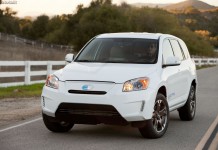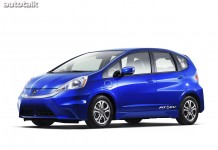If you have ever purchased a car chances are you have heard this question – Should I lease a car or just go ahead and purchase one? There is no right answer to this question. Leases and loans are simply two different methods of automobile financing. One finances the use of a vehicle; the other finances the purchase of a vehicle. Each has its own benefits and drawbacks.
It's not possible to simply say that one is always better than the other because the answer depends on each specific situation. The decision to 'lease or buy' heavily depends upon the personal priorities rather than financial comparisons.
Is having a new vehicle every two or three years with no major repair risks more important than long-term cost? Or are long term cost savings more important than lower monthly payments? Is having some ownership in your vehicle more important than low up-front costs and no down payment? Is it important to you to pay off your vehicle and be debt-free for a while, even if it means higher monthly payments for the first few years?
First, is to understand that buying and leasing are fundamentally different, not just two versions of the same thing.
Difference between Buying and Leasing:
When you buy, you pay for the entire cost of a vehicle, regardless of how many miles you drive it. You typically make a down payment, pay sales taxes in cash or roll them into your loan, and pay an interest rate determined by your loan company, based on your credit history. You make your first payment a month after you sign your contract.
When you lease, you pay for only a portion of a vehicle's cost, which is the part that you "use up" during the time you're driving it. You have the option of not making a down payment, you pay sales tax only on your monthly payments (in most states), and you pay a financial rate, called money factor, that is similar to the interest rate on a loan.
With leasing, you may also be required to pay special lease-related fees and possibly a security deposit that you don't pay when you buy. You make your first payment at the time you sign your contract — for the month ahead.
Buy vs lease example
As an example, if you lease a $25,000 car that will have, say, an estimated resale value of $15,000 after 24 months, you pay for the $10.000 difference (this is called depreciation), plus finance charges, plus fees.
When you buy, you pay the entire $25,000, plus finance charges, plus fees.
This is fundamentally why leasing offers significantly lower monthly payments than buying.
Lease payments are made up of two parts: a depreciation charge and a finance charge. The depreciation part of each monthly payment compensates the leasing company for the portion of the vehicle's value that is lost during your lease. The finance part is interest on the money the lease company has tied up in the car while you're driving it. In effect, you are borrowing the money that the lease company used to buy the car from the dealer. You repay part of that money in monthly payments, and repay the remainder when you either buy or return the vehicle at lease-end.
Loan payments also have two parts: a principal charge and a finance charge, similar to lease payments. The principal pays off the full vehicle purchase price, while the finance charge is loan interest.
However, since all vehicles depreciate in value by the same amount regardless of whether they are leased or purchased, part of the principal charge of each loan payment can be considered as a depreciation charge, just like with leasing — it's money you never get back, even if you sell the vehicle in the future.
The remainder of each loan principal payment goes toward equity. It's what remains of your car's original value at the end of the loan after depreciation has taken its toll. Equity is resale value. It's what you get back if you sell the vehicle. The longer you own and drive a vehicle, the less equity you have. At some point in time, after the wheels have fallen off and the engine is worn out, the only equity left is scrap value. You never get back the amount you've paid for your vehicle.
Buy versus lease – savings account or no savings account
So, buying a car with a loan is essentially like putting money into a declining-value savings account — you never get out as much as you put in. A portion of every payment you make is lost to depreciation and finance charges. What you have "to show" for your investment when your loan is paid off is only the part that is left over after depreciation and interest. A terrible investment by any measure. But cars are not usually purchased as investments, are they?
Leasing, then, is similar to buying, but without the equity "savings account." You only pay for what you use and you don't put anything extra into "savings." It's true that you'll own nothing at the end of a lease; you'll have nothing "to show" for the money you've put into it. But… what you don't own is the same part of the car's original value — the depreciated part — that a buyer too doesn't own at the end of his loan. Again, a car's value depreciates the same amount whether it is leased or purchased. That money is gone forever, lease or buy.
With leasing, you may have the option of putting your monthly payment savings into more productive investments, such as mutual funds or stocks that have the possibility of increasing in value. In fact, many experts encourage this practice as one of the benefits of leasing, though most people will typically find other uses for the money they save by leasing — such as paying the mortgage or buying groceries.
To summarize, leasing typically does not build equity, while buying does. The reason that a buyer has equity at the end of his loan is that he purchases that equity by making higher monthly payments. Leasing – lower payments, no equity. Buying – higher payments, some equity.
Leasing can be a little more complicated
Because leasing is somewhat more complicated; with residuals, money factors, etc.; it shouldn't be undertaken quite as casually as you might with a simple loan. There are more opportunities to misunderstand and make mistakes. Therefore, leasing requires that you be more careful and more informed.
Just a comment on lease-to-buy plans
Some folks lease with the intention of buying their vehicle at the end of the lease, or before the end of the lease. This is nearly always more expensive than simply buying outright. However, you may have a good reason for this tactic. Just be aware that it costs you more in the long term.
One other thing
Most car leases have automatic built-in gap coverage, while car purchase loans almost always do not. Gap coverage, or gap insurance, pays the difference between what you owe on your loan or lease, and what your vehicle is actually worth if your vehicle is stolen or destroyed.
Why is this important? Because it's very common with car leases and loans, in these days of 0% interest, no down payment, and delayed payments, to owe more than your car is worth for most of the life of the financing. This can mean you'll still owe hundreds or thousands of dollars to the finance company even after your insurance has paid off — for a car you no longer have. This turns out to be a shocking surprise for most people caught in this unfortunate situation.




